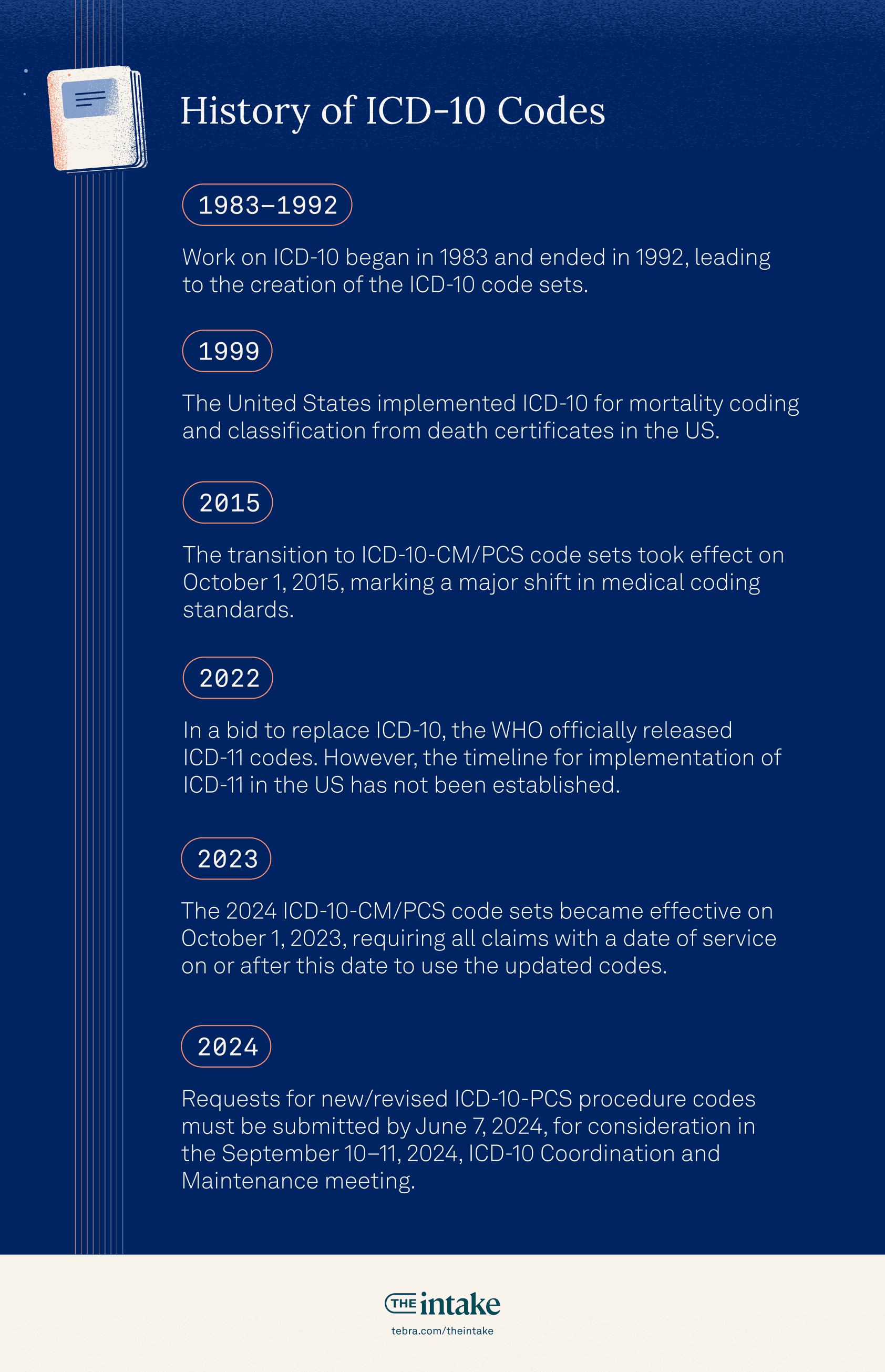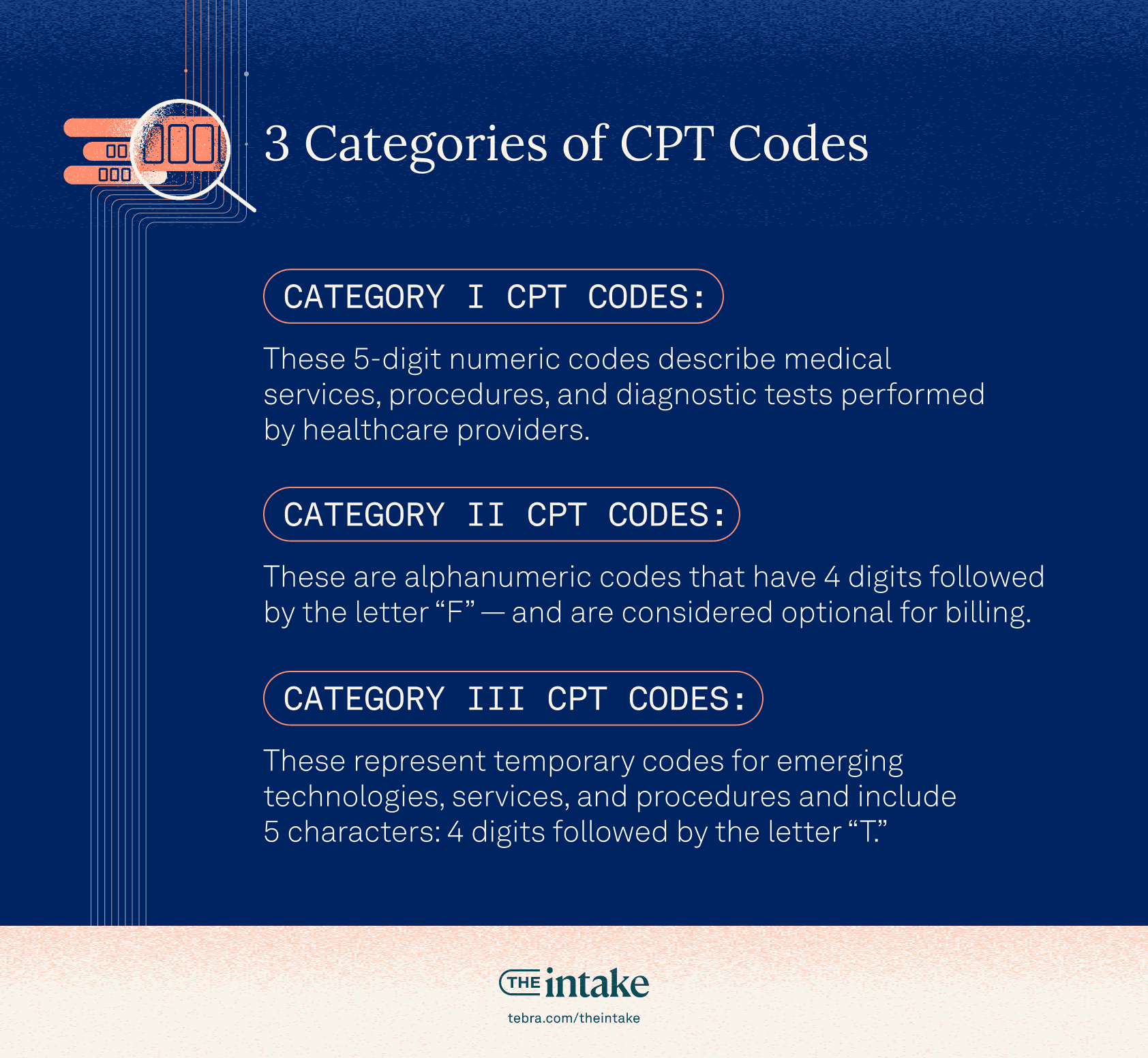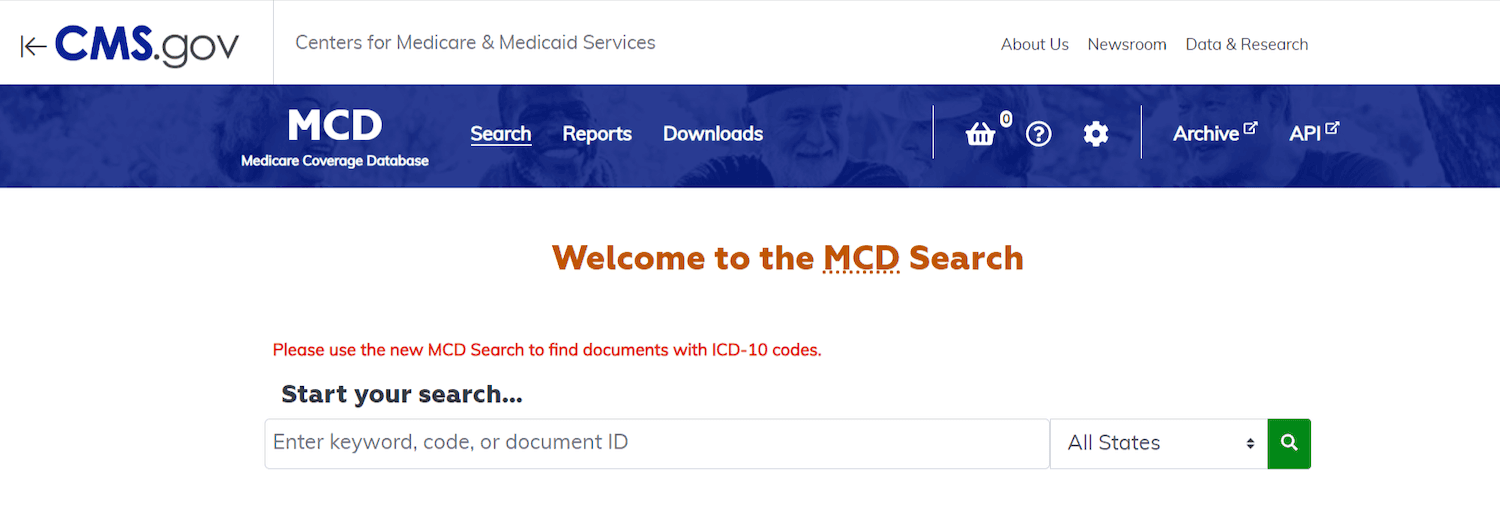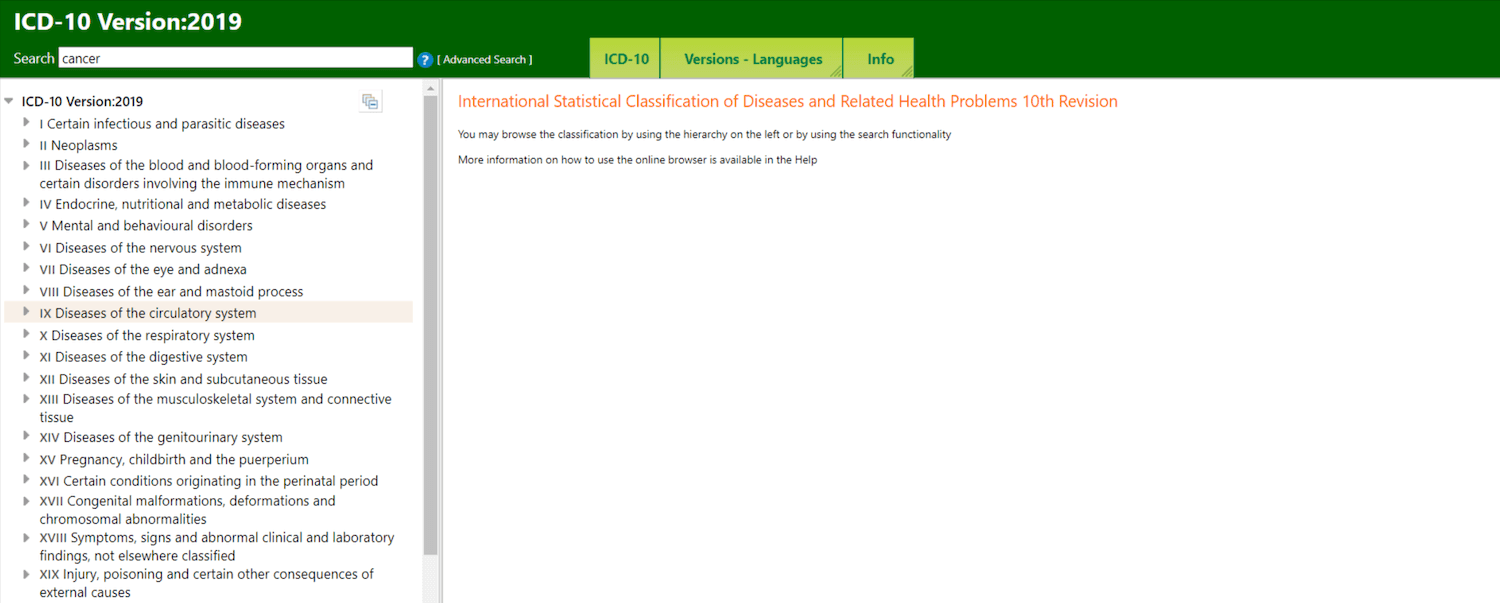Overview
- ICD-10, CPT, and HCPCS codes standardize billing for medical services.
- Accurate coding ensures proper reimbursement and compliance.
- Ongoing education helps coders stay updated with regulatory changes.
As a healthcare provider, you know how critical medical coding is to your business. It acts as the backbone of your billing and reimbursement process. Yet, it’s also a complicated process. As you’re setting up your processes, you might have questions like, “What are ICD-10 codes?” or “How do I use the right ICD-10 code?” You’re not alone.
When a simple coding error could cost you thousands of dollars or a returning patient, there’s a lot on the line. A survey by KFF found that 43% of United States adults have received a medical or dental bill with an error. Two-thirds of these respondents said it involved being billed for an issue that their insurance provider should have covered.
It’s unsurprising, to say the least. The way the system is set up, you have to wade through thousands of codes from various systems, making it a time-consuming, complex, and overwhelming process for providers.
To address these challenges, you need to clearly understand the coding system and its applications for your practice. In this guide, we’ll provide an in-depth look into coding systems such as:
- ICD (International Classification of Diseases)
- CPT (Current Procedural Terminology)
- HCPCS (Healthcare Common Procedure Coding System)
We’ll dive into the specifics of each system so that you have a solid foundation in each — and are better equipped to navigate it.
Download your free resource now
Access it instantly — just complete the form

What are ICD-10 codes?
The International Classification of Diseases, 10th revision (ICD-10) coding system has 3 purposes:
- Morbidity and mortality statistics
- Reimbursement processes
- Automated decision support
This system is much more detailed than its predecessor, the ICD-9, allowing providers to document patient conditions more accurately.
It also provides better datasets for research and public health tracking projects, allowing healthcare organizations to track disease patterns and subsequent outcomes. Ultimately, it improves patient care and resource allocation in every region.
What’s the history of ICD-10 codes?
The development of ICD-10 began in 1983 to reflect new discoveries and therapies. ICD-9 CM only had ~13,000 codes, whereas ICD-10 CM has ~70,000 codes with scope for expansion.
Here’s what the official timeline looks like:
- 1983–1992: Work on ICD-10 began in 1983 and ended in 1992, leading to the creation of the ICD-10 code sets.
- 1999: The US implemented ICD-10 for mortality coding and classification from death certificates in the US.
- 2015: The transition to ICD-10-CM/PCS code sets took effect on October 1, 2015, marking a major shift in medical coding standards.
- 2022: In a bid to replace ICD-10, the WHO officially released ICD-11 codes. However, the timeline for implementation of ICD-11 in the United States has not been established.
- 2023: The 2024 ICD-10-CM/PCS code sets became effective on October 1, 2023, requiring all claims with a date of service on or after this date to use the updated codes.
- 2024: Requests for new/revised ICD-10-PCS procedure codes must be submitted by June 7, 2024, for consideration in the September 10–11, 2024, ICD-10 Coordination and Maintenance meeting.

Who is the governing body for the ICD codes?
The World Health Organization (WHO) owns and publishes ICD-10 codes. However, the National Center for Health Statistics (NCHS) modified and implemented its usage in the United States.
Currently, the Centers for Disease Control and Prevention (CDC) and the Centers for Medicare and Medicaid Services (CMS) maintain the ICD-CM codes.
ICD-10 codes by year
Since 1996, WHO has released an update every year. The WHO and NHCS approve them during an October meeting. This annual update is meant to reflect any advances in medical knowledge, changes in disease patterns, and new technologies. This way healthcare and insurance providers can input codes that account for the nuances in the industry.
Every year, the WHO releases the updated version of these codes for the upcoming fiscal year by September 30. So, it’s essential that your billing vendor continuously updates its system to reflect these changes. These changes are then implemented and are effective for the fiscal year starting October 1 through September 30.
For instance, for the fiscal year 2024, 526 ICD-10 codes were introduced and were effective from October 1, 2023. Here are a few examples of the new codes:
- A41.54: Sepsis due to Acinetobacter baumannii
- E75.27: Pelizaeus-Merzbacher disease
- G43.E01: Chronic migraine with aura, not intractable, with status migrainosus
While the WHO maintains the updated list of overall ICD-10 codes. The NCHS maintains the ICD-10 CM codes (which are updated annually in July). The CMS maintains the ICD-10 PCS codes (which are updated twice a year, in April and October). For each of these code sets, the changes go through the ICD-10-CM/PCS Coordination and Maintenance Committee.
You can find the update code sets on 3 different websites:
- World Health Organization: ICD-10 updates
- Center for Disease Control and Prevention: ICD-10 lookup tool
- Centers for Medicare and Medicaid Services: ICD-10 updates
For instance, CMS published a new update to ICD-10 PCS codes in April 2024 in which it implemented 41 new codes. Some of these codes fall under specialties such as obstetrics, radiation, and surgical procedures. If you want to make sure you have the right codes, consult any of these websites before billing your patients.
How are ICD-10 codes commonly used?
ICD-10 codes are used by many practitioners such as healthcare providers, insurance companies, and governmental bodies. Let’s look at how each of these practitioners use it — and how the codes play a role in streamlining the medical system.
How do physicians use ICD coding?
In a healthcare setting, physicians use ICD-10 codes for the following purposes:
1. Billing and reimbursement processes
Physicians don’t just communicate with other physicians. They need a way to accurately relay information about a patient’s care to insurance companies. ICD-10 lets you use specific codes that go into granular detail, which helps insurance companies decide whether they should reimburse payment and how much.
2. Clinical documentation and patient records
The ICD-10 codes offer a standardized method for documenting patient diagnoses, symptoms, and reasons for check-ups. They aren’t limited to in-patient or outpatient procedures, as there are specific codes for both.
You can use codes instead of relying on handwritten request forms for referrals or diagnostic tests. Codes eliminate ambiguity and give specialists and diagnosticians a shared language to determine the reason for the referral or order.
This means that wherever your patients go, they have an accurate patient record in a digital format accessible in multiple settings — a hospital, clinic, or private practice. Plus, the codes offer a concise way to record a patient’s health status, treatment plan, and progress report over time.
3. Quality reporting and performance measurement
Physicians also use ICD-10 codes for quality reporting and performance measurement purposes. The Merit-based Incentive Payment System (MIPS) and Alternative Payment Models (APMs) oversee its usage.
By accurately coding patient diagnoses and procedures, physicians can:
- Demonstrate adherence to clinical guidelines
- Track patient outcomes across specialties
- Participate in value-based reimbursement models
What is ICD-10 in medical billing?
ICD-10 is a standardized coding system to code diagnoses, symptoms, and procedures in healthcare settings. The goal is to standardize reporting in healthcare, which improves data quality and facilitates better billing procedures, disease management, and research.
“Accurate ICD-10 codes are not only important for reflecting the services provided to patients, but also crucial for practice revenue.”
For example, say a patient comes in for stomach pain but a biller accidentally enters a CPT code for an X-ray, Since the CPT code doesn’t match the necessary ICD-10 code, it may look like a false claim to the insurance provider — resulting in a rejected claim for a practice.
Accurate ICD-10 codes are not only important for reflecting the services provided to patients, but also crucial for practice revenue.
What is the full form of ICD-10 CM in medical coding?
ICD-10-CM stands for International Classification of Diseases, 10th revision, Clinical Modification. It was developed by the CDC and CMS, and is used to code diagnoses and symptoms in healthcare settings. It allows healthcare providers to document and report patient diagnoses so that insurance providers and other medical bodies can use the information in a standardized format.
The difference between ICD-10-PCS and ICD-10-CM codes, explained
There are 2 types of ICD-10 codes:
- ICD-10-CM (Clinical Modification): Healthcare and insurance providers use this system for diagnosis coding
- ICD-10-PCS (Procedure Coding System): Healthcare and insurance providers use this only for hospital in-patient procedures
Together, they form a comprehensive system to document complex conditions and treatments. This system enables hospitals and patients to get reimbursed by insurance agencies without issues like ambiguity or errors.
Who uses the ICD-10-CM codes?
The ICD-10-CM are usually used in a healthcare setting, but many other professionals use them, too. Here’s a list of professionals and institutions that use them regularly:
- Physicians and other healthcare providers: They use it to document patient diagnoses in medical records.
- Medical coders: They use it to review medical records and assign the correct codes for billing purposes.
- Hospitals and healthcare facilities: These institutions generally use it for billing, quality measurement, and reporting purposes.
- Insurance companies and payers: These institutions use it to determine the medical necessity of services provided and the amount of reimbursement to offer.
- Public health agencies: These institutions use it to track and monitor disease outbreaks, injuries, and other health conditions.
- Researchers and data analysts: They use it to study disease patterns, treatment outcomes, and healthcare utilization.

How do ICD-10-CM codes work?
The ICD-10-CM code structure is alphanumeric and consists of 3–7 characters. The first character is always a letter, while the second and third can be letters or numbers.
Characters 4–7 are always numbers. In some cases, a placeholder character “X” is used to allow for future expansion or to fill in empty spaces in a code.
The CDC maintains the ICD-10-CM system, which has specific codes for laterality, severity, and other clinical details. It releases updates in April and October every year.
Compared to the ICD-9-CM system, the current version allows you to record patient conditions with more accuracy and precision. Instead of focusing on procedures providers have performed, it’s primarily used to report diagnoses and reasons for patient encounters and intake.
The codes are organized into 21 chapters based on body systems or condition categories. For example:
- Diseases of the digestive system
- Diseases of the eye and adnexa
- Pregnancy, childbirth, and the puerperium
The codes don’t directly impact reimbursement amounts but impact DRG assignment and the reimbursement process.
The difference between ICD-9-CM and ICD-10-CM
There are several differentiators between the old ICD system and the current one. Here’s how they differ from each other:
Structure of the code
ICD-9-CM codes were 3–5 characters in length, with the first character being either numeric or alphabetical (E or V) and characters 2–5 being numeric. The decimal appears after the first 3 characters.
But ICD-10-CM codes are 3–7 characters in length, with the first character always being alphabetical and characters 2–7 being alphabetical or numeric. The decimal placement remains the same.
Specificity of the code
Because ICD-9-CM codes are much shorter in length, they lack specificity. They also lack laterality (left vs. right) and have a reduced capacity to capture detailed clinical information.
On the other hand, ICD-10-CM codes are long, allowing them to capture more information within a single code structure. They also incorporate laterality, which helps providers create data-rich patient records.
Coverage of the code
ICD-9-CM has ~13,000 codes and doesn’t cover health conditions identified since the 1980s.
ICD-10-CM has ~68,000 codes, which include not only newer terminologies and treatments but also incorporate codes for ambulatory and managed care encounters. The coverage is much broader in this case, supporting the nuanced needs of the healthcare industry.
Chapters and categories
ICD-9-CM has 17 chapters and includes numeric categories (001–999) for diseases and injuries. It also offers supplementary classifications (E and V codes) for external injury causes and health factors.
ICD-10-CM has 21 chapters, with alphanumeric categories (A00–Z99) for diseases and injuries. It has chapters on pregnancy, certain conditions originating in the perinatal period, and external causes of morbidity.
What is the SDOH and ICD code relationship?
As a provider, you know that many diseases stem from a patient’s social and economic condition and connect to a lifestyle issue, eating habits, and social status in society.
Social determinants of health (SDOH) are the conditions in which people are born, grow, live, work, and age, and they help determine health outcomes and health inequities. SDOH data is intrinsically linked with ICD-10 code usage.
Healthcare providers, policymakers, and researchers recognize the need to address these factors and use them to identify at-risk populations. For this reason, ICD-10 codes include SDOH-specific codes to provide additional context.
A preprint published in 2021 found that when a Department of Veterans Affairs Medical Center (VAMC) used SDOH codes, acute care utilization among veterans improved. This shows the value of SDOH-specific codes and why more institutions should adopt them.
Most of these codes are in the “Z” chapter of ICD-10-CM. This chapter covers the “Factors influencing health status and contact with health services.” Some examples of SDOH-related ICD-10-CM categories include:
- Z55: Problems related to education and literacy
- Z56: Problems related to employment and unemployment
- Z59: Problems related to housing and economic circumstances
- Z60: Problems related to social environment
- Z62: Problems related to upbringing
- Z63: Other problems related to a primary support group, including family circumstances
- Z65: Problems related to other psychosocial circumstances
This information helps guide treatment decisions, referrals to social services, and population health management strategies.
It’s important to note that despite its positive impact on health outcomes and evidence-based interventions, SDOH only accounts for less than 1% of ~70,000 codes. This indicates a need to expand the scope of SDOH codes to fully capture the complex nature of issues exacerbated by social determinants.
Who else commonly uses ICD-10 codes?
Apart from physicians, several other practitioners and institutions use ICD-10 codes:
- Population health management institutions use the ICD-10 system to identify population health trends, risk factors, and health disparities. This analysis helps them develop targeted interventions and programs.
- Clinical researchers follow the code system to identify patient cohorts for clinical studies, epidemiological investigations, and health services research.
- Public health organizations use it to monitor the incidence and prevalence of diseases, track outbreaks, and identify emerging health threats.
- Physicians, researchers, and government officials who participate in public-private partnerships use it to share patient data across health settings (health information exchange and interoperability).
- Academic institutions apply it in their training programs to teach medical coding, health information management, and data analysis skills.
How are ICD-10 codes written?
These ICD-10 CM codes used in clinical settings contain alphanumeric characters and consist of 3–7 characters each.
The first character is always a letter, and the next 2 are numbers. The subsequent characters can be a string of letters or a number that appear after a period.
Each character provides information about the diagnosis or procedure the provider used to treat the patient. The basic structure of an ICD-10 code is as follows:
- Characters 1–3: Category of disease, condition or injury
- Character 4, 5, and 6: Depending on the category, it could provide more information about the etiology, anatomic site, severity, and laterality
- Character 7: Extension or qualifier
Sometimes, a placeholder character “X” allows for future expansion or fills empty spaces in a code.
What do the ICD-10 codes stand for alphabetically?
Since physicians typically use ICD-10 CM codes, we’ve explained the structure for the same below.
ICD-10 CM codes contain multiple chapters, with each representing an anatomical area or condition.
Here’s a list of these chapters and their corresponding anatomical systems:
- A00–B99: Certain infectious and parasitic diseases
- C00–D49: Neoplasms
- D50–D89: Diseases of the blood and blood-forming organs and certain disorders involving the immune mechanism
- E00–E89: Endocrine, nutritional, and metabolic diseases
- F00–F99: Mental, behavioral, and neurodevelopmental disorders
- G00–G99: Diseases of the nervous system
- H00–H59: Diseases of the eye and adnexa
- H60–H95: Diseases of the ear and mastoid process
- I00–I99: Diseases of the circulatory system
- J00–J99: Diseases of the respiratory system
- K00–K95: Diseases of the digestive system
- L00–L99: Diseases of the skin and subcutaneous tissue
- M00–M99: Diseases of the musculoskeletal system and connective tissue
- N00–N99: Diseases of the genitourinary system
- O00–O9A: Pregnancy, childbirth, and the puerperium
- P00–P96: Certain conditions originating in the perinatal period
- Q00–Q99: Congenital malformations, deformations, and chromosomal abnormalities
- R00–R99: Symptoms, signs, and abnormal clinical and laboratory findings not elsewhere classified
- S00–T88: Injury, poisoning, and certain other consequences of external causes
- V01–Y99: External causes of morbidity and mortality
- Z00–Z99: Factors influencing health status and contact with health services
- U00-U85: Codes for special purposes
The category designation serves as the base code. You can add characters to this code to represent relevant clinical details.
For example, if you want to find the code for type 2 diabetes mellitus (E11), here’s how it’s structured:
- E: The first character, “E,” indicates that the code is from the “Endocrine, nutritional, and metabolic diseases” chapter.
- 11: The next 2 characters, “11,” specify the condition as type 2 diabetes mellitus.
You can add characters to provide more specific information about the diabetes:
- E11.29: Type 2 diabetes mellitus with other diabetic kidney complication
- E11.21: Type 2 diabetes mellitus with diabetic nephropathy
- E11.22: Type 2 diabetes mellitus with diabetic chronic kidney disease
What are the code sets and classifications?
Healthcare and government institutions worldwide use standardized code sets and classifications for purposes like research, billing, or diagnosis. They’re fundamental in helping medical providers translate patient data into universal billing and reimbursement codes.
Providers use 4 major systems:
- International Classification of Diseases (ICD): Providers use a standardized coding system to code diagnoses, symptoms, and procedures. These are usually associated with hospital use and consist of ICD-10-CM (Clinical Modification) and ICD-10-PCS (Procedure Coding System).
- Current Procedural Terminology (CPT): This is a coding system used for medical, surgical, and diagnostic services. Providers use these codes to report services to payers for reimbursement.
- Healthcare Common Procedure Coding System (HCPCS): This coding system identifies products, supplies, and services typically not included in the CPT classification system. It’s divided into 2 parts: level 1 and level 2. Level 1 of the HCPCS is based on CPT codes.
- Diagnostic-related group (DRG): It’s a patient classification system that Medicare and private payers use to standardize prospective hospital payments. The goal is to encourage cost containment initiatives by grouping patients with similar characteristics and assigning a specific weight to reflect the average treatment costs.
You’ll use these systems in some capacity as part of your in-patient coding system. First, you have to go through the patient’s record, such as:
- Admission notes
- Progress notes
- Physician orders
- Operative reports
- Discharge summaries
Once you do, you’ll use that information to apply the necessary codes using the ICD-10 coding system. The goal is to generate a DRG group for the patient to eventually get reimbursed.
| Coding system | Purpose | Governing body | Number of codes | Usage |
| International Classification of Diseases, 10th revision, Clinical Modification (ICD-10-CM) | Used for diagnosis coding | CDC (US only) | ~70,000 codes | Used globally for reporting health conditions and causes of death. In the US, it’s used in healthcare settings for diagnosis and procedure coding. |
| International Classification of Diseases, 10th revision, Procedure Coding System (ICD-10-PCS) | Used for inpatient procedure coding | CMS (US only) | ~87,000 codes | |
| Current Procedural Terminology (CPT) | Standardized coding system for reporting medical services and procedures performed by healthcare providers. | AMA | ~10,000 codes | Used primarily in outpatient settings in the US for billing purposes. |
| Healthcare Common Procedure Coding System (HCPCS) | Standardized coding system based on CPT codes. Level 1 HCPCS codes are CPT codes, while level 2 HCPCS codes are alphanumeric codes used to report products, supplies, and services not included in CPT codes. | CMS | ~7,000 level 2 HCPCS codes | Used in the US for reporting products, supplies, and services not covered by CPT codes, such as ambulance services, durable medical equipment, and prosthetics. |
| Diagnostic-related group (DRG) | System used to classify hospital cases into groups for the purpose of payment. DRGs are based on diagnoses, procedures, age, sex, and presence of complications or comorbidities. | CMS | ~700 DRGs | Used in the US for hospital inpatient billing and payment under the Medicare Inpatient Prospective Payment System (IPPS). |
What is Healthcare Common Procedure Coding (HSCPS)?
The Healthcare Common Procedure Coding System (HCPCS) is another standardized coding system for reporting healthcare services, procedures, and equipment provided to patients.
Healthcare providers, insurers, and government programs like Medicare and Medicaid follow the HCPCS system to ensure consistency in coding and reimbursement. It’s divided into 2 levels: level 1 and level 2.
Level I HCPCS Codes (CPT codes)
Level 1 HCPCS codes, or current procedural terminology (CPT) codes, are 5-digit numeric codes that describe medical, surgical, and diagnostic services.
The American Medical Association (AMA) developed these codes and updates them as needed. However, the book is published annually. In addition, certain codes like proprietary laboratory analyses (PLA) codes are updated quarterly. Level 1 HCPCS codes are divided into 3 categories:
- Category 1: This category includes codes for commonly performed services and procedures, such as office visits, surgical procedures, and diagnostic tests. It’s divided into 6 sections: evaluation and management, anesthesiology, surgery, radiology, pathology and laboratory, and medicine.
- Category 2: This category contains supplemental tracking codes that are used for performance measurement instead of reimbursement purposes. They’re alphanumeric and consist of 4 digits followed by the letter “F” but could end with another alphabetical character since the official structure notes that they end in an alphabetical character. These codes are released 3 times a year.
- Category 3: This category includes temporary codes for emerging technologies, services, and procedures. These alphanumeric codes consist of 4 digits followed by the letter “T.” Providers use these codes for data collection and assessment of new services and procedures. In a case where you do mention a category 3 code that describes a procedure, use it in place of a listed/unlisted category 1 code. Usually, category 3 codes are either turned into category 1 codes or sunset after a period of 5 years.
Level 2 HCPCS codes
The level 2 HCPCS codes, also known as “HCPCS codes” or “national codes,” are alphanumeric codes that begin with a letter followed by 4 numbers.
These codes identify products, supplies, and services that aren’t included in the level 1 HCPCS set. Here are a few examples:
- Ambulance services
- Durable medical equipment
- Prosthetics
- Orthotics
- Supplies
CMS created the level 2 HCPCS codes and continues to update them annually.
The Medicare Electronic Application Request Information System (MEARIS) has replaced paper-based systems. You can use it to submit HCPCS level 2 applications to CMS for Medicare coding and payment-related applications.
What are HCPCS codes, and how are they related to ICD and CPT codes?
In a typical healthcare encounter, you’ll apply ICD-10 CM codes to document the patient’s diagnosis or the reason for the visit. However, you’ll use CPT and HCPCS level 2 codes to describe the specific procedures, services, and items provided during the encounter.
This combination creates a comprehensive picture of the patient’s medical condition and the care they received.
For example, if a patient visits a physician’s practice with type 2 diabetes mellitus, this is what the code would look like:
- ICD-10-CM code: E11.9 (type 2 diabetes mellitus)
- CPT code: 80053 (metabolic panel)
- HCPCS level 2: J1817 (insulin glargine)
Payers use these codes to determine the appropriate reimbursement based on the services and items rendered.
Medicare and MACs (Medicare administrative contractors)
Medicare is a federal health insurance program in the United States. It only covers individuals who are 65 or older, who are younger but with disabilities, or who have end-stage renal disease (ESRD). It’s managed by CMS but also includes private insurance companies known as Medicare administrative contractors (MACs). These contractors process and pay Medicare claims, enroll healthcare providers, and educate them about billing requirements.
MACs are usually responsible for certain jurisdictions only but they do handle hospital insurance (part A) and medical insurance (part B) payments. Some of their responsibilities include the following:
- Processing payments for healthcare providers
- Conducting medical review of claims submitted by providers
- Educating providers and respond to relevant inquiries
- Review and establish local coverage determinations (LCDs)
What is MEARIS?
Medicare Experience and Reporting Information System (MEARIS) is a web-based application developed by CMS to collect and manage data related to the Medicare program. MACs use the system to offer reports on metrics such as workload, financial data, performance, and enrollment data. CMS uses MEARIS to identify issues in the program and make informed decisions on improving it.
What are CPT codes?
As stated above, current procedural terminology codes — also known as CPT codes — are HCPCS level 1 codes. They are a coding system developed and maintained by the AMA and are used to describe medical, surgical, and diagnostic services provided by healthcare professionals.
In the US, they’re used for billing outpatient services so that insurance providers know for what the patient was billed.
The 3 categories of CPT codes
There are 3 categories of CPT codes, as follows:
- Category 1 CPT codes: These 5-digit numeric codes describe medical services, procedures, and diagnostic tests performed by healthcare providers. They’re divided into 6 sections: evaluation and management, anesthesiology, surgery, radiology, pathology and laboratory, and medicine. For example, 27447 represents total knee arthroplasty.
- Category 2 CPT codes: These are alphanumeric codes that have 4 digits followed by the letter “F” (it could also be another alphabetical character) and are considered optional for billing. They’re mostly used for quality reporting, performance measurement, and care improvement. For example, 1111F represents medication reconciliation.
- Category 3 CPT codes: These represent temporary codes for emerging technologies, services, and procedures and include 5 characters: 4 digits followed by the letter “T.” For example, 0071T represents focused ultrasound ablation of uterine leiomyomata. If you’re using it for a procedure, use it in place of a category 1 code since category 3 codes are either turned into category I codes or sunset after 5 years.

Difference between CPT and ICD codes?
The main difference between CPT and ICD-10 CM codes is that the former focus on medical, surgical, and diagnostic services, while the latter focus on diagnosis, symptoms, and procedures.
“The main difference between CPT and ICD-10 CM codes is that the former focus on medical, surgical, and diagnostic services, while the latter focus on diagnosis, symptoms, and procedures.”
When you submit an outpatient claims for reimbursement, use a combination of ICD-10 codes to describe the patient’s diagnosis and CPT codes to describe the services and procedures performed. For inpatient claims, use a combination of ICD-10 CM and ICD-10 PCS codes.
Using ICD codes in your practice
Physicians use ICD-10 CM codes in their practice according to the nature of these codes. Before we explore how you can use ICD-10 CM codes in your practice, let’s review common challenges you can expect with medical coding processes:
- ICD-10 and other coding systems are highly complex and specific, with thousands of codes and numerous guidelines for proper use. This complexity can make it difficult to select the most appropriate codes — leading to errors in billing.
- If you rely too much on a system to get the job done, you must cross-check whether it’s updated annually.
- Accurate medical coding requires a deep understanding of anatomy, physiology, medical terminology, and coding guidelines. You need to work with coders with high expertise, who are hard to find.
- Inconsistent, incomplete, or ambiguous documentation can lead to coding errors, denied claims, and potential legal and financial consequences. So, you need good documentation practices.
- Coders often face pressure to maintain high productivity while ensuring coding accuracy and compliance. This balance is hard to achieve internally, so it’s best to leave it to outsourced billing partners.
- Different payers might have different documentation processes, making compliance difficult. Navigating these differences is easier when you have the right procedures.
We recommend using an electronic health record (EHR) that captures all the patient data and lets you map it to the right code.
Tebra recognizes how difficult it can be to set up your own billing systems internally, even with the right tools. For this reason, we can help you find a billing partner for your practice — one with demonstrated experience in the field.
How do I apply to get new codes added to the system?
Whether you’re from the public or private sector, you can request code modifications to be added to the system. You can submit these requests via CMS’s official portal called MEARIS for ICD-10-PCS modifications. You need to include the relevant background paper using the Section-508 PowerPoint compliant file and PDF slide deck — which can be found on CMS’s official website.
As for ICD-10-CM modifications, you can submit requests via CDC’s official website where you can find the proposal and summary templates. You need to mention why you’re requesting a change and its clinical relevance, along with the suggested change within the classification structure.
In Tebra’s EHR system, the codes are updated when the governing body introduces a new update. For instance, CPT codes are updated annually but ICD-10-CM codes are updated every quarter.
Which is the best EHR/EMR for ICD-10 conversion?
Most EHR systems and medical coding software have built-in ICD-10 code lookup functionality. For example, Tebra’s EHR lets you search for codes within the tool, and if you need to convert ICD-9 codes to ICD-10 codes, you can just use the ICD-10 Diagnosis Crosswalk tool.
Plus, it has several other features that let you streamline your billing process with ease. For instance, Tebra provides templates that guide providers in capturing specific, accurate details necessary for ICD-10 coding. You can export and print clinical records to provide physical copies for claims and audit processes.
In addition, you can use integrated coding tools such as coding crosswalks and dual coding tools to select the right ICD-10 codes for your specialty and procedure. This reduces the likelihood of errors during the transition and ongoing use. You also have the option to use digital superbills that capture frequently used codes and make them available to you — reducing time spent on the billing process.
How to look up an ICD code
Here are a few sources to help you find the right ICD-10 codes:
Official ICD-10-CM and ICD-10-PCS websites
You can find ICD-10-CM codes on the CDC’s official website. The codes are available through the ICD-10-CM browser tool.

CMS has its own search tool, the Medical Coverage Database (MCD) Search, which shows data on the codes and whether Medicare covers specific conditions.

Where to find a list of ICD-10 codes
The following websites provide the most current version of the ICD-10 code sets, coding guidelines, resources, and updates.
ICD10Data.com
ICD10Data.com is a free online tool that lets you search for codes by:
- Keyword
- Code description
- Code hierarchy
You can also convert old codes to the recent ICD-10 list and use it for diagnosis or billing purposes.

The World Health Organization (WHO) ICD-10 website
This website provides access to the international version of the ICD-10. Last updated in 2019, this version serves as the basis for country-specific adaptations like ICD-10-CM. You can search the database using disease or condition descriptors — for example, “cancer.”

How do I easily find the correct ICD-10 codes?
Here’s a step-by-step process to finding the right ICD-10 codes:
- Official websites: Download the complete code set files in PDF or XML format and search for the code using the “Find” function in your PDF reader or text editor.
- Online lookup tools: Use the online code lookup tools provided on the websites, which allow you to search for codes by keyword, code description, or code hierarchy. Simply enter your search query and you’ll get a list of codes from the database.
- EHRs: Some EHRs have ICD-10 codes built in, such as Tebra's EHR. Within it, you can look up the codes for diagnoses (ICD-10-CM) or procedures (CPT). All you have to do is go to the “Settings” dropdown, choose “Codes,” and choose “Find Diagnosis” or “Find Procedure.”

Simplify the medical coding process with Tebra
Navigating the complexities of ICD-10 codes doesn’t have to be daunting. With the right tools at your fingertips, you can ensure accuracy, enhance patient care quality, and streamline operations — all while staying compliant and maximizing reimbursement.
Embrace the ease of managing ICD-10 codes with technology that understands the nuances of your work and supports your mission to deliver superior care.
ICD-10 code FAQs
1. How many ICD-10 codes are there?
There are ~68,000 ICD-10-CM codes and ~87,000 ICD-10-PCS codes as of April 2024. The former is separated by 21 chapters and the latter is separated by 17 sections.
2. What are the most common ICD-10 codes?
Physicians use some codes regularly. Here are some of them, organized by specialty:
Family medicine
Primary care
Mental health
Orthopedics
- M19.041: Primary osteoarthritis, right hand
- M19.241: Secondary osteoarthritis, right hand
- M05.432: Rheumatoid myopathy with rheumatoid arthritis of the left wrist
- M54.50: Low back pain, unspecified
Urgent care
- J02.8: Acute pharyngitis due to other specified organisms
- J06.9: Acute upper respiratory infection, unspecified
- R07.1: Chest pain on breathing
- Z00.00: Encounter for general adult medical exam without abnormal findings
- Z00.129: Encounter for routine child health examination without abnormal findings
3. What are the new ICD-10 codes for 2024?
In 2024, CMS introduced 526 new billing codes. The new codes include the following:
- W44.B3xA: Plastic toy and toy part entering into or through a natural orifice, initial encounter
- Z62.23: Child in custody of a non-parental relative
- Z62.823: Parent-step child conflict
- M80.8B2P: Other osteoporosis with current pathological fracture, left pelvis, subsequent encounter for fracture with malunion
- H50.662: Superior oblique muscle entrapment, left eye
You can find the rest here.
4. What are some unusual ICD-10 codes?
Most ICD-10 codes describe common medical conditions and procedures. However, some codes capture unusual or rare situations:
- V97.33XD: Sucked into a jet engine, subsequent encounter
- W56.22XA: Struck by orca, initial encounter
- Z63.1: Problems in relationship with in-laws
- V91.07XA: Burn due to water skis on fire, initial encounter
- W61.12XA: Struck by macaw, initial encounter
- Y93.D1: Activity, knitting and crocheting
- V95.41XA: Spacecraft crash injuring occupant, initial encounter
- Y92.253: Opera house as the place of occurrence of the external cause
- W220.2XD: Walked into lamppost, subsequent encounter
5. What is the longest ICD-10 code?
ICD-10 codes have a maximum character count of 7 characters. In some cases, the code description can go up to 400 characters.
Download your free resource now
Access it instantly — just complete the form

You might also be interested in
Optimize your independent practice for growth. Get actionable strategies to create a superior patient experience, retain patients, and support your staff while growing your medical practice sustainably and profitably.









